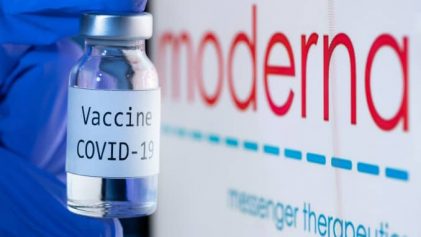FDA released breifing document on Moderna covid19 vaccine. Below are the highlights on safety from the document:
- Efficacy of the vaccine to prevent COVID-19 occurring at least 14 days after dose 2 was 94.5%, (95% CI 86.5%; 97.8%) in participants without prior evidence of SARS-CoV-2 infection. VE was >93% in the group of participants with or without prior infection.
- Higher frequency of Adverse events were reported by the majority of vaccine recipients than placebo recipients. Vaccine recipients reported higher rates of local reactions after dose 1 than dose 2
- Most common local injection site reactions are pain, erythema, swelling, and lymphadenopathy and systemic reactions are fever, headache, fatigue, myalgia, arthralgia, chills, and nausea/vomiting.
- After pain, lymphadenopathy is the most frequent reported local reaction for which FDA has raised concern.
- The most common unsolicited adverse events were headache, myalgia, arthralgia, injection site erythema, and injection site pain.
- The most frequently reported AEs in the hypersensitivity SMQ were injection site rash, injection site urticaria, and rash maculo-papular. There were no anaphylactic or severe hypersensitivity reactions with close temporal relation to the vaccine.
- Small imbalance in the number of participants reporting Bell’s palsy (facial paralysis), with 3 vaccine recipients and 1 placebo. One case of Bell’s palsy in the vaccine group was considered a SAE. FDA will recommend surveillance for cases of Bell’s palsy with deployment of the vaccine into larger populations.
Serious adverse events and their causality assessment:

- 7 SAEs (4.8%) in the mRNA-1273 group and 5 (3.3%) in the placebo group were assessed by the investigator as related to study vaccination.
- Of the 7 SAEs in the mRNA-1273 group, the Sponsor assessed 4 as related and 3 as unrelated to the vaccine.
- 13 deaths were reported (6 vaccine, 7 placebo). These deaths represent events and rates that occur in the general population of individuals in these age groups.
- The most common Non-fatal Serious Adverse Events occurring at higher rates in the vaccine group than the placebo
group were myocardial infarction (0.03% in vaccine group, 5 cases vs. 3 cases in placebo group), cholecystitis (0.02% in vaccine group, 3 cases vs. 0 cases in placebo group), and nephrolithiasis (0.02% in vaccine group, 3 cases vs. 0 cases in placebo group). The small
numbers of cases of these events do not suggest a causal relationship. - In FDA’s opinion following review of the narratives, 3 SAEs are considered likely related, including the one report of intractable nausea/vomiting and 2 reports of facial swelling. The possibility that the vaccine contributed to the SAE reports of rheumatoid arthritis, peripheral edema/dyspnea with exertion, and autonomic dysfunction cannot be excluded. The vaccine was unlikely to have contributed to the other SAEs assessed by the investigator as related. As described in detail in a previous section, there was one report of Bell’s palsy in the vaccine arm which occurred 32 days after vaccination; both the investigator and the Sponsor assessed this event as unrelated to the study vaccine, but in FDA’s assessment a causal relationship cannot be definitively excluded.
Pharmacovigilance Activities:
- The Sponsor submitted a Pharmacovigilance Plan to monitor safety concerns that could be associated with the Moderna COVID-19 Vaccine. The Sponsor identified vaccine-associated enhanced disease (which includes but is not limited to vaccine-associated enhanced respiratory disease) and anaphylactic reactions (including anaphylaxis) as important potential risks.
- Use in the pediatric population, use in pregnant and breast-feeding women, immunogenicity in participants with immunosuppression, concomitant administration with non-COVID vaccines, long-term safety and long-term effectiveness are areas the Sponsor identified as missing information.
- The Sponsor will conduct both passive and active surveillance activities for continued vaccine safety monitoring. Passive surveillance activities will include submitting spontaneous reports of the following events to the Vaccine Adverse Event Reporting System (VAERS) within 15 days:
- Vaccine administration errors whether or not associated with an adverse event
- Serious adverse events (irrespective of attribution to vaccination)
- Cases of Multisystem Inflammatory Syndrome in adults
- Cases of COVID-19 that result in hospitalization or death
- The Sponsor will also conduct periodic aggregate review of safety data and proposed to submit periodic safety reports at quarterly intervals, or at another interval specified by FDA.
Link for reference document:. https://www.fda.gov/advisory-committees/advisory-committee-calendar/vaccines-and-related-biological-products-advisory-committee-december-17-2020-meeting-announcement#event-materials

Leave a Reply